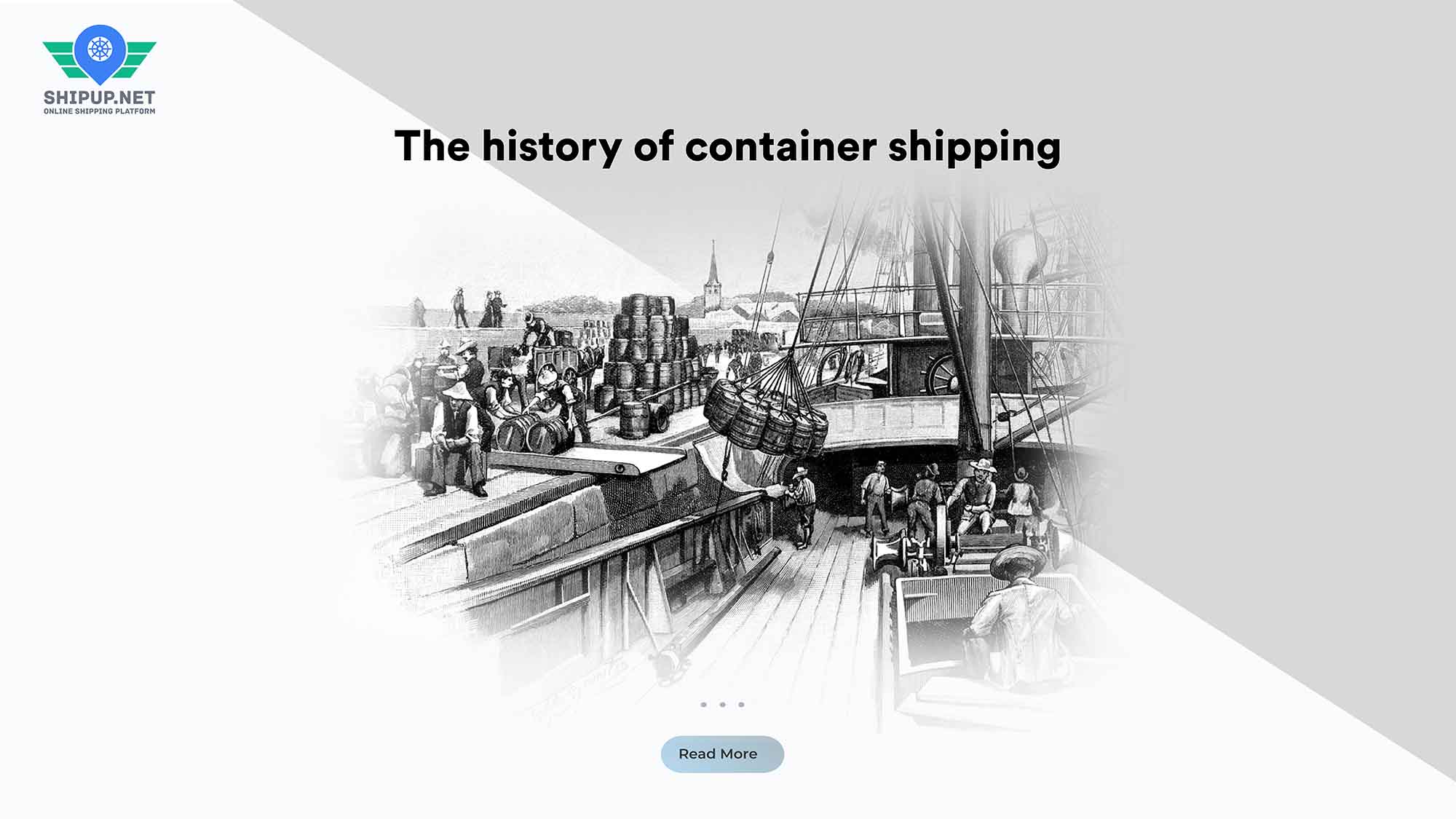Shipping containers have revolutionized global trade, and their history is worth exploring. Prior to the introduction of shipping containers, goods had to be laboriously packed and manually loaded into the holds of ships, a process that was both time-consuming and inefficient. This system, also known as break-bulk shipping, often took weeks to load and unload each ship, leading to lengthy shipping times and higher costs.
Then came the breakthrough that changed the game: the standardized shipping container. Introduced in the 1950s, these intermodal containers were designed to be easily loaded onto and off ships, trains, and trucks. The standardization of the shipping container allowed for a streamlined process of moving goods, reducing the chances of damage to the freight and increasing efficiency overall.
The Birth of the Modern Shipping Container
The history of container shipping goes back to 1956 when an American entrepreneur named Malcom McLean had a vision that would revolutionize the shipping and global trade industry. He wanted to find a way to make it quicker and more efficient to load his trucking company’s cargo onto shipping vessels. With the help of engineer Keith Tantlinger, they came up with the world’s first shipping container – an intermodal container that could easily be transported between road, rail and sea.
The creation of the shipping container made a remarkable impact on the industry as it eliminated wasted space and cut unloading time by up to three weeks. The innovation of the shipping container allowed cargo to be transported seamlessly between modes of transportation, making it more convenient and reducing potential damages or losses during transit. It’s truly amazing to think that this one invention transformed the entire process of shipping and brought about a whole new era of transportation that has continued to evolve and connect the world even more.
Revolutionizing the Shipping Industry
After the invention of the shipping container in the mid-20th century, its impact on global trade was undeniable. The world’s first container ship, the Ideal X, sailed from the port of Newark to the port of Houston in 1956, carrying 58 shipping containers. In 1968, the International Standards Organisation standardized the container as a 20-foot long, 8-foot high and 8-foot wide box. From then on, ships were completely re-designed around the dimensions of these containers, and shipping costs plummeted.
The shipping container has been a major catalyst of globalization, as it has revolutionized ports, rail networks, ships, cities, and countries all over the world. Today’s modern shipping vessels can carry over 20,000 TEU shipping containers, equivalent to 20 million shipping containers "on the water" traveling between countries. Amazingly, over 90% of purchased items have been transported inside a shipping container. It’s no wonder that the Economist claims that "the shipping container has been more of a driver of globalization than all trade agreements in the past 50 years together." The history of container shipping is a fascinating one, and it shows how much transportation has evolved in the modern age.
Challenges in International Trade
The history of container shipping has seen a lot of progress over the years, but the industry still faces challenges today. With massive ports and infrastructure in place all over the world, getting products shipped from one country to another is no longer the primary issue. Instead, the problem lies with the number of different parties involved in each shipment and the number of manual processes involved in the flow of information and documentation between these parties.
Thankfully, as the digital revolution transforms the world around us, the world of International Trade is starting to catch up with technology. Tech companies around the world are developing innovative software and solutions for exporters, importers, ports, and shipping lines to improve efficiencies and streamline processes.
However, no single company can handle streamlining such a massive and complicated industry on its own. The key to truly revolutionizing the industry is for these innovative tech companies to work together toward creating a single cohesive solution. With the combined efforts of these companies, we can make International Trade easy and efficient for all parties involved.
Adding Visibility and Convenience with Visiwise Visibility Platform
In recent years, several tech companies have emerged to tackle the challenges and inefficiencies that persist in the global cargo shipping industry. Among them is Visiwise, a leading provider of shipment tracking and cargo management services.
Visiwise Visibility Platform helps businesses gain better visibility and tracking for their shipments, providing real-time updates that allow for more efficient management of shipment management operations. With the Visiwise Visibility Platform, businesses can monitor shipments in transit from all carriers on a single platform, allowing them to access critical information such as delivery times, shipment statuses, and ETA history.
In addition, Visiwise’s solution offers a variety of customizable communication tools, including an online workspace, to keep both customers and internal teams informed at each stage of the shipment process. This not only adds convenience and peace of mind for customers but also helps businesses streamline their logistics and optimize customer satisfaction.
By providing visibility and convenience in shipment management, platforms such as Visiwise are helping to move the global business forward, improving supply chain efficiency and driving economic growth across borders. This is particularly true for e-commerce businesses, which rely heavily on order fulfillment and timely shipping to maintain customer satisfaction and consumer trust. By partnering with tech solutions such as Visiwise Visibility Platform, e-commerce businesses can optimize their delivery operations and remain competitive in a global marketplace.



